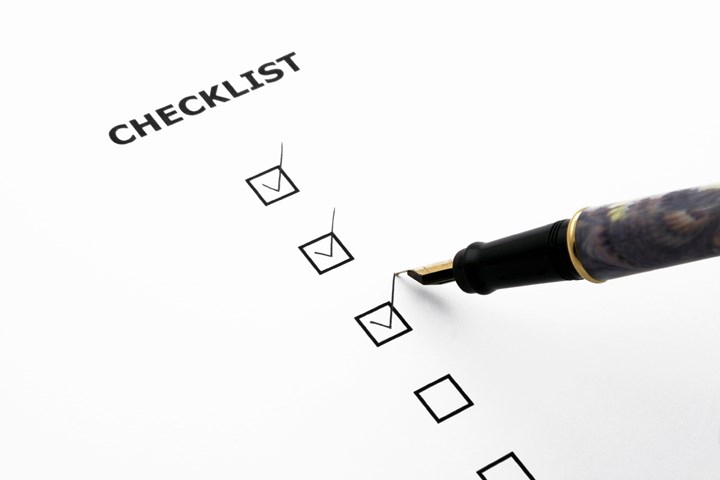What Is Quality Planning?

A Quality Plan is a document, or several documents, that together specify quality standards, practices, resources, specifications, and the sequence of activities relevant to a particular product, service, project, or contract. Quality plans should define a method for measuring the achievement of the Quality objectives. Quality objectives are measurable goals relevant to enhancing customer satisfaction and are consistent with the Quality policy. These objectives are initially established when planning your Quality Management System (QMS) and redefined in management reviews as needed. Examples can include goals to improve on-time delivery, defects, or scrap.
It is the responsibility of top management to ensure that a QMS is implemented and properly maintained. They should undertake QMS planning to ensure:
- The on-going development of the QMS to meet the requirements
- The on-going development of policies and objectives
- Processes and resources exist to identify characteristics at different stages
- The ability to proactively review and improve the QMS
- Verification activities, determine criteria for acceptability
Each department manager should develop and maintain a process map, flow chart, quality plan, operating procedure, etc., that show the workflow of the department as well as referencing evidence of compliance with the requirements of the QMS. If your organization outsources specific processes or requires strict control over its supplied product, it might be appropriate to establish a quality plan. This defines the quality practices, resources, and activities relevant to the product to be designed or supplied while also establishing how to meet the requirements for quality. The quality assurance requirements are then implemented through the use of this plan in conjunction with the manufacturer’s quality manual and operating procedures.
This plan further includes, but is not limited to, the following key activities, as appropriate, in meeting the specified requirements for the products, projects, or contracts. The preparation of the quality plan might include:
- The identification of processes, resources, and skills to achieve quality
- The identification of suitable verification criteria at appropriate stages
- Demonstrating compatibility of design, production, inspection, and testing
- The clarification of standards of acceptability for all features per requirements
- Details of calibration of any special measuring or test equipment to be used
- Applying Total Quality to Sales (sales/customer service in need of quality training)
Mục lục
Q&A on Quality
Q: Why is quality planning needed?
A: Managers consider quality planning in conjunction with the rest of the project (product or contract) planning because it influences costs, scheduling, and other factors. Without vital quality planning, a project (product or contract) carries an increased risk that the client will not be satisfied with the results.
Q: What should be included in a QA Plan?
A: A quality assurance plan should include an organizational structure, details on each employee’s responsibilities, and the qualifications an employee needs to fulfill those responsibilities. A QA Plan also specifies requirements for suppliers and the materials they ship.
Q: What should be included in a QC Plan?
A: Your inspection procedures should include how you control the following:
- Making sure that the work order is ready to begin
- Handling material receiving and inspections
- Monitoring work in process
- Verifying that completed work meets project (product or contract) specifications
Q: What are quality planning tools?
A: There are nine quality tools identified as appropriate for use in both the quality management plan and control quality processes.
- Cause-and-effect diagrams
- Flowcharting
- Check sheets
- Pareto diagrams,
- Control charts
- Histograms
- Scatter diagrams
- 5S concept (short – set in order – shine – standardize – sustain)
- Value stream analysis involves drawing up a process flow chart for the business and then asking at each stage (including the stages between activities) whether cost/waste or value is being added. This often highlights unnecessary space, distance traveled, processing inefficiency, etc.
Q: What is Total Cost of Ownership (TCO)
A: Purchase, Delivery, Install, Training, Operation Labor, Maintenance, Water, Energy/Fuel Use, Health & Safety, Disposal & Recycling.
- Total Cost of Ownership (TCO) involves considering all the costs associated with a product over its lifetime—from initial purchase price through its use, maintenance, and disposal costs.
- Many of these additional costs are associated with social and environmental impacts, such as energy use, worker exposure, and landfill/incineration.
- Therefore, reducing a procurement’s TCO is often a win for an organization’s bottom line and a win for sustainability.
- Prevention is the Key to Reduced Quality Costs. Customer-facing processes must be designed to prevent errors and minimize the cost of failure.
- True failure costs = Commonly measured failure costs + Hidden failure costs
- Visible costs & hidden costs range 20-25% of Total Cost
About the Author
Lewis Yasenchak, MBA, BS, is the founder and owner of P&Y Management Resources, which specializes in building and improving the plastics industry supply chain.
RELATED CONTENT
-
Keeping Up with ISO: Sort, Set, Shine, Standardize, Sustain
The 5S system is a working tool for ISO 9001:2015 that was developed to help mangers and work personnel systematically achieve greater organization, standardization, efficiency and safety in the workplace.
-
Exploring ISO 9000 – Part 16 Control of Quality Records
A Series of International Standards for Quality Management and Quality Assurance. We begin 2022 with a review of Clause 4.16 Control of Quality Records.
-
Making Quick and Easy Kaizen Work for Your Shop
Within each person is unlimited creative potential to improve shop operations.






